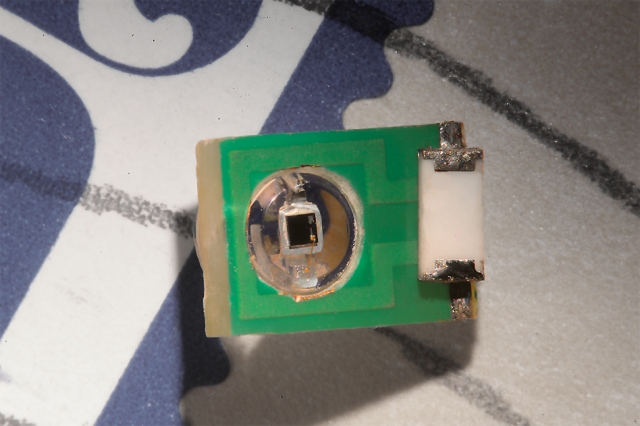
MIT engineers have developed a sensor that can be used to measure optical and electrical signals in the brain, using MRI. Credit: Felice Frankel
Source: [Anne Trafton | MIT News Office, October 22, 2018]
Technique could be used to detect light or electrical fields in living tissue.
Researchers commonly study brain function by monitoring two types of electromagnetism — electric fields and light. However, most methods for measuring these phenomena in the brain are very invasive.
MIT engineers have now devised a new technique to detect either electrical activity or optical signals in the brain using a minimally invasive sensor for magnetic resonance imaging (MRI).
MRI is often used to measure changes in blood flow that indirectly represent brain activity, but the MIT team has devised a new type of MRI sensor that can detect tiny electrical currents, as well as light produced by luminescent proteins. (Electrical impulses arise from the brain’s internal communications, and optical signals can be produced by a variety of molecules developed by chemists and bioengineers.)
“MRI offers a way to sense things from the outside of the body in a minimally invasive fashion,” says Aviad Hai, an MIT postdoc and the lead author of the study. “It does not require a wired connection into the brain. We can implant the sensor and just leave it there.”
This kind of sensor could give neuroscientists a spatially accurate way to pinpoint electrical activity in the brain. It can also be used to measure light, and could be adapted to measure chemicals such as glucose, the researchers say.
Alan Jasanoff, an MIT professor of biological engineering, brain and cognitive sciences, and nuclear science and engineering, and an associate member of MIT’s McGovern Institute for Brain Research, is the senior author of the paper, which appears in the Oct. 22 issue of Nature Biomedical Engineering. Postdocs Virginia Spanoudaki and Benjamin Bartelle are also authors of the paper.
Detecting electric fields
Jasanoff’s lab has previously developed MRI sensors that can detect calcium and neurotransmitters such as serotonin and dopamine. In this paper, they wanted to expand their approach to detecting biophysical phenomena such as electricity and light. Currently, the most accurate way to monitor electrical activity in the brain is by inserting an electrode, which is very invasive and can cause tissue damage. Electroencephalography (EEG) is a noninvasive way to measure electrical activity in the brain, but this method cannot pinpoint the origin of the activity.
To create a sensor that could detect electromagnetic fields with spatial precision, the researchers realized they could use an electronic device — specifically, a tiny radio antenna.
MRI works by detecting radio waves emitted by the nuclei of hydrogen atoms in water. These signals are usually detected by a large radio antenna within an MRI scanner. For this study, the MIT team shrank the radio antenna down to just a few millimeters in size so that it could be implanted directly into the brain to receive the radio waves generated by water in the brain tissue.
